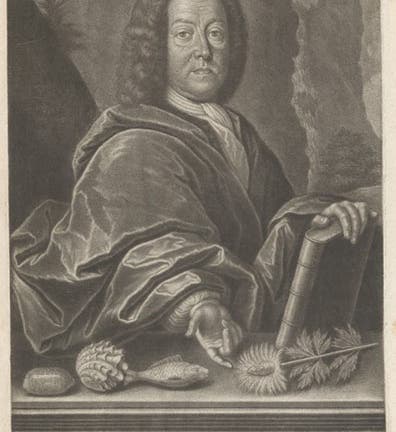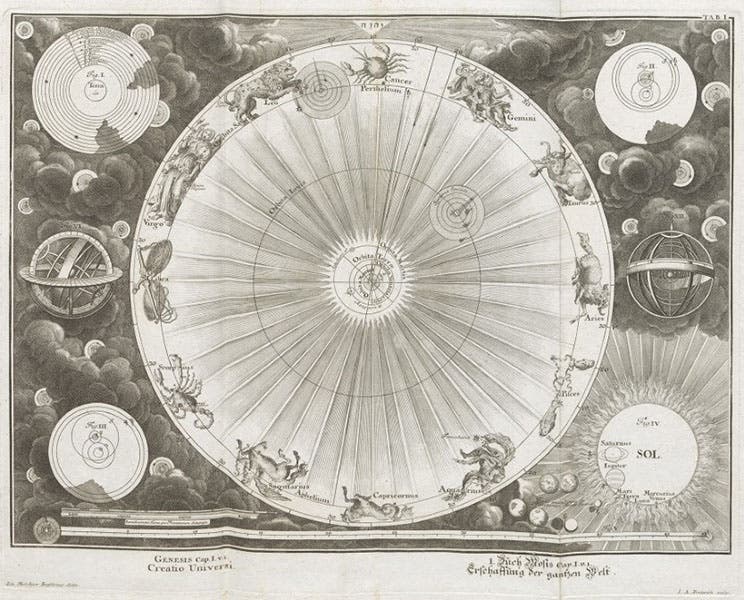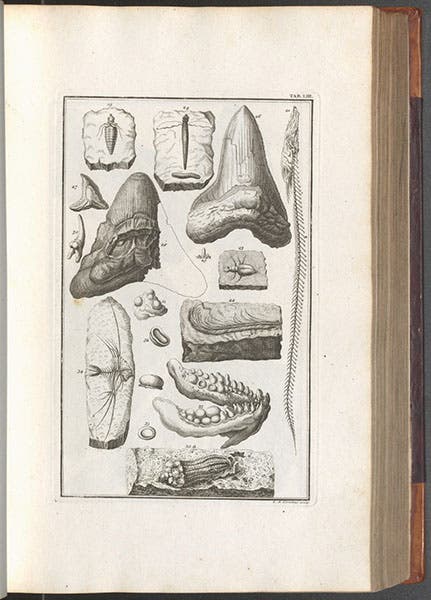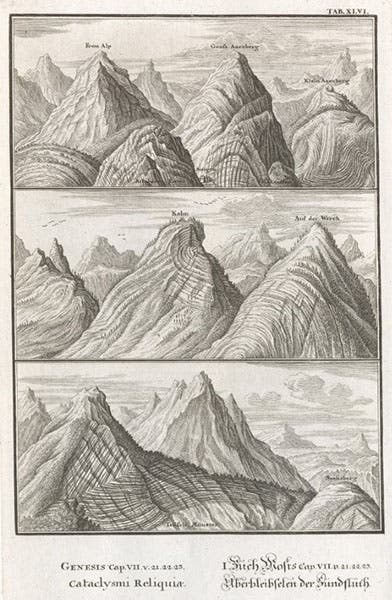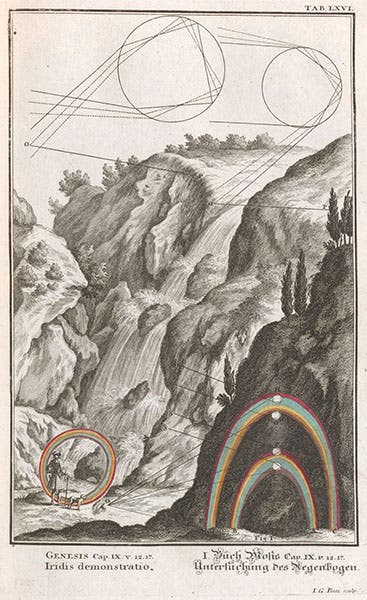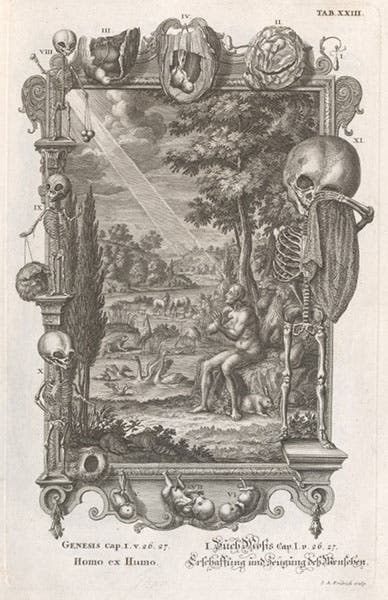Scientist of the Day - Johann Jakob Scheuchzer
Johann Jakob Scheuchzer, a Swiss naturalist and geologist, was born Aug. 2, 1672. Scheuchzer studied and mapped the strata of his native Switzerland, and collected a wide variety of fossils of shells, fish, and plants. Scheuchzer was what we call a diluvialist, in that he believed that rock strata and fossils were all deposited in the Great Flood of Noah. He even found what he thought were the remains of a human who died in the Flood, which he called Homo diluvii testis – the "human witness of the Flood" – and wrote a pamphlet about his fossil find. We wrote a post about this part of Scheuchzer's career five years ago, and showed some images of his fossils and his supposed human witness.
Scheuchzer was an ardent apostle of "natural theology", which held that since God created " Two Books" about the world – the Book of Scripture and the Book of Nature – then one could (and should) learn about God and his attributes by studying the natural world as well as the Bible. We have written about several early natural theologians in this series; John Ray, William Derham, and Richard Bentley are just three of them.
Scheuchzer, however took a giant step beyond his contemporaries. If one can learn about God and the world by studying the Bible and by studying nature, why not combine the two and publish a Bible with a running commentary on natural history, so that each discipline can mutually shed light on the other. The outcome was Scheuchzer's massive Physica Sacra , a four-volume set of thick folios that is often referred to as the "Copper Bible” (Bibel kupfer), because of its abundant copper-plate engravings. The work starts with Genesis 1:1 and proceeds via 760 engravings to illuminate 760 Biblical verses with the most recent information gathered by natural philosophers and natural historians.
For example, the plate that illustrates Genesis 1:1 (second image above), where God creates heaven and earth, shows a detailed diagram of the universe, which in 1731 was essentially the solar system; we can tell it is up-to-date because it includes Galileo's four moons of Jupiter and the five recently discovered moons of Saturn. There are even four alternate cosmologies in the four corners.
Many plates of the Physica sacra were devoted to the events surrounding the Flood: the construction of the Ark, the Flood itself, and its aftermath. To illustrate the onset of the Flood, Scheuchzer drew on the proposal by William Whiston that the Flood was the result of the near passage of a comet (third image above).
Since Scheuchzer believed that all fossils and strata were deposited by the Flood, he took the opportunity to display, in ten consecutive engravings, many of the fossils he had collected (we see one of these above, fourth image), even the Homo diluvii testis (fifth image above). He also included a stratigraphic map of the regions around Lake Lucerne in Switzerland, which he had published earlier in a different form, and which was at the time was the first stratigraphic map of any place in the world (sixth image, just above)
Because the end of the Flood was greeted by a rainbow, Scheuchzer was able to illustrate this with an engraving that shows both Descartes' and Isaac Newton's work on the optics of the rainbow (seventh image, just above). In our copy, this is the only plate that has added hand-coloring.
The plate that illustrates Genesis 1:26-7, Homo ex humo (man from dust) is engaging because of its frame, which contrasts Adam's creation with the development process followed by all later humans (eighth image, just above). The striking image of a fetus weeping into its placental handkerchief was one he borrowed from Frederik Ruysch.
My own favorite plate is one that illustrates Genesis 25:25, which describes Esauus vilosus, Esau the hairy man, where Scheuchzer takes the opportunity to contrast Esau with a picture of a chimpanzee, originally published by Nicolaes Tulp, that was one of the first images in Europe to show an African great ape (ninth image, just above).
The attraction of the Copper Bible format for Scheuchzer is that it gave him a framework within which to place a wealth of scientific knowledge that otherwise would be very difficult to structure. It was an encyclopedia of nature, organized by God and annotated by Scheuchzer. No wonder it was so popular, with editions in Latin, French, and German. It was, almost, the perfect book.
Dr. William B. Ashworth, Jr., Consultant for the History of Science, Linda Hall Library and Associate Professor emeritus, Department of History, University of Missouri-Kansas City. Comments or corrections are welcome; please direct to ashworthw@umkc.edu.

